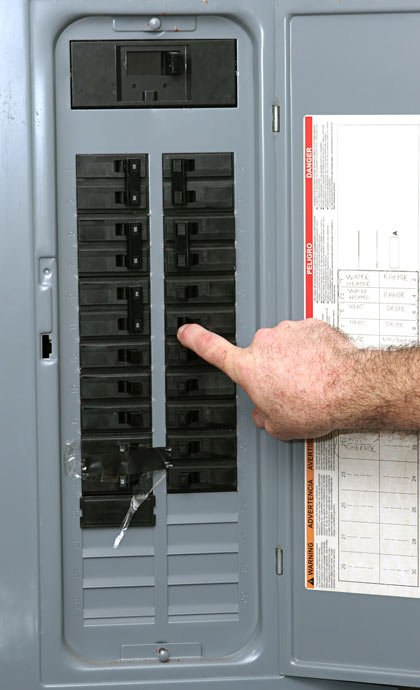If you have ever scrutinized the main circuit board in your home or business, you probably have noticed that there are two different types of breakers. The first, a single pole breaker and the second, a double pole breaker. A single pole breaker is typically used with 120-volt circuits, 15-20 amps. They are constructed with one hot wire and one neutral wire. A double pole breaker is primarily used with a 240-volt circuit, 20-60 amps and consists of two hot wires.
The circuit breaker, the wire and the wire insulation are all designed to work together as a system. The system created has limits. When you attempt to force more current through a circuit, the wires will begin to heat up and the insulation around the wire can then degrade and in some cases, even melt. When this occurs, the current is no longer confined within the initial wire and a fire results. However, a circuit breaker will sense any excess current and will trip the system to stop the entire flow of power before any real damage can occur.
 With that said, circuit breakers are used as specialized safety devices that help serve to prevent an electrical circuit from drawing or using more current than it is typically designed to use. They help prevent possible fire hazards that can occur as a result of overheated wiring in your home or business. Every outlet in your home or office is connected directly to a wiring system that receives power through a circuit breaker. Circuit breakers can be easily reset once they trip and the cause of the additional current draw is repaired or removed.
With that said, circuit breakers are used as specialized safety devices that help serve to prevent an electrical circuit from drawing or using more current than it is typically designed to use. They help prevent possible fire hazards that can occur as a result of overheated wiring in your home or business. Every outlet in your home or office is connected directly to a wiring system that receives power through a circuit breaker. Circuit breakers can be easily reset once they trip and the cause of the additional current draw is repaired or removed.
Most residential homes and small office buildings are connected to the local utility company’s power grid which provides both 120-volt and 240-volt currents. Most of the electrical outlets in your home deliver 120-volts. However, some of the appliances in your home or office may require a higher voltage, usually 240-volts, since they need more energy to operate properly.
Single-Pole Breakers
When looking at your electrical panel, the single pole breakers are those that are narrow switches. These are used for a number of appliances such as general lighting outlets, vacuums, fans, power tools, curling irons, blow dryers, outdoor lighting, TVs, radios, computers, DVD players, clocks cellphone chargers and air compressors to name a few. The single pole breaker is wired with one hot wire and one neutral wire as we indicated above. If an overload in a single-pole breaker circuit occurs, only that specific breaker will trip.
Double-Pole Breakers
When viewing your electrical panel, the double-pole breakers are those that have double switches. Used with central air conditioners, electric ranges, electric dryers, electric water heaters, electric baseboard heat and even hot tubs to name a few, they can also be used to serve appliances with lower voltage circuits. The double-pole breakers are wired with two hot wires connected by a single neutral wire. With this type of connection, if ever a short circuit occurs on the wires of either of the poles, then both will trip. The double-pole breakers are usually used to serve a single 240-volt circuit but can also be used to serve two separate 120-volt circuits
We hope you found this article useful. At South Nashville Heating and Cooling we are all about our clients. You are our #1 priority which is why we stand ready to answer all your questions, discuss your concerns and serve you with your every need. Don’t delay. Contact our technicians today to ensure the overall health and safety of your home or office!!









